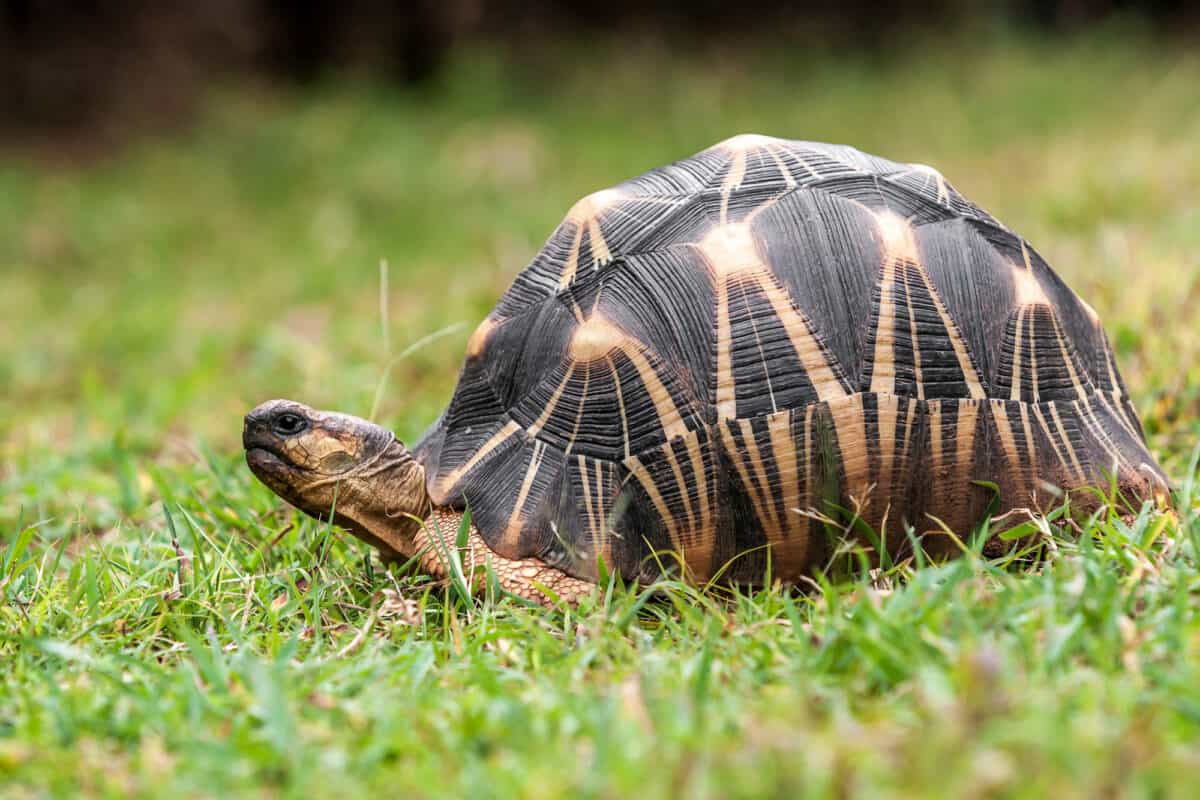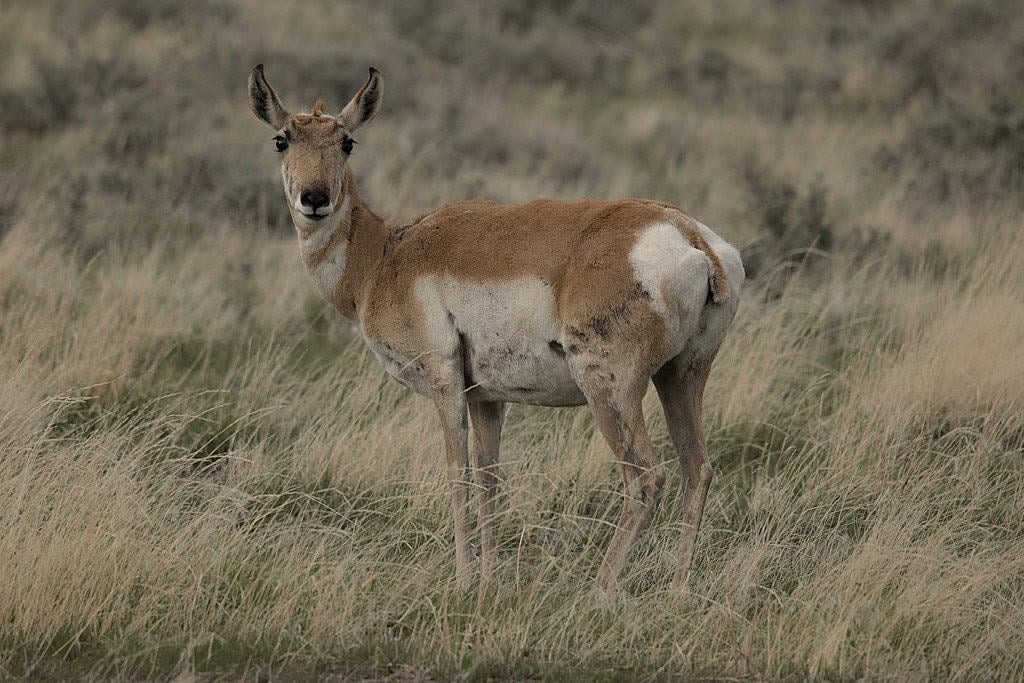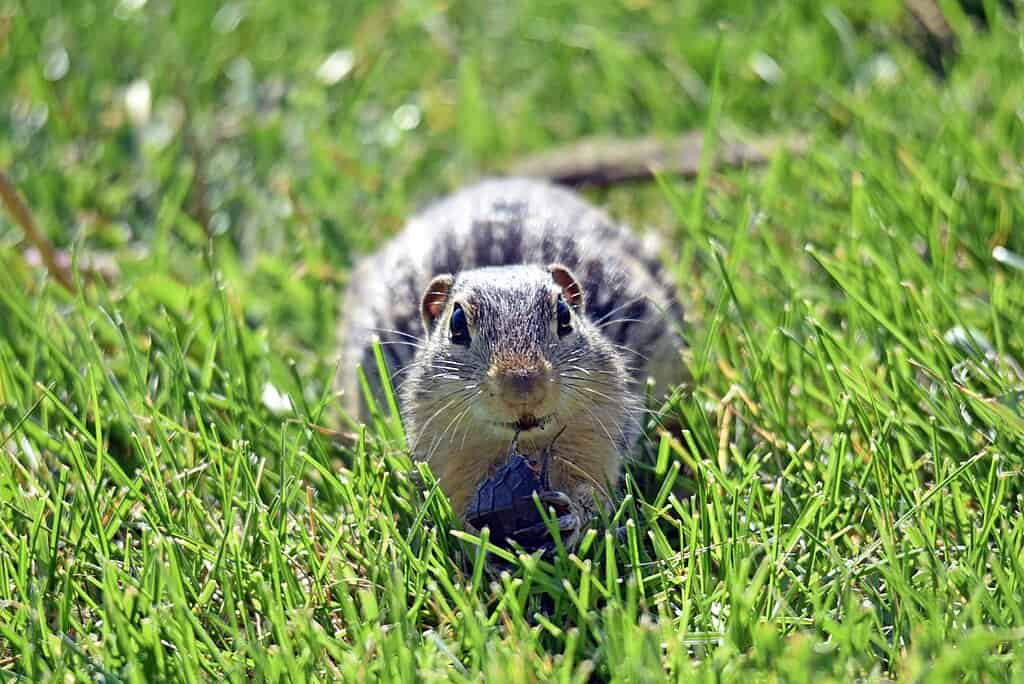The desert of Nevada is home to many different types of animals and wildlife.
Nevada is located in the intermountain plateau. Nevadan wild animals can easily survive in the rugged environment— around 4000 animal species, including 52 reptiles, 490 birds, and rodents. Nevada also has some animals not found anywhere else on earth.
Wildlife in Nevada

The predators found in Nevada are mountain lions, bobcats, and coyotes. Lk, mule deer, and pronghorn antelope are seen grazing in Nevada. Boxes of different types are found in Nevada, such as kit, gray, and red foxes. Mammals found in Nevada are blacktail jackrabbits, bats, river otters, and beavers.
The rodents native to Nevada are ground squirrels, yellow pine chipmunks, and kangaroo rats. Other animals found in Nevada are muskrats, ringtails, and mountain beavers, and Nevada also has hundred of birds and waterfowl species.
The birds found in Nevada are roadrunner, blue heron, and California quail. Bighorn sheep, mule deer, and mountain goats are located in the cliffy areas in Nevada. Different snake species, turtles, and frogs are also found in Nevada. The Ila monster, a strange reptile, is also found in Nevada.
Click below to jump to a section on animals in Nevada:
Desert Bighorn Sheep

Muscular body with chocolate earthy-colored fur. Have white hair around the gag, back end, and stomach. ams (guys) have massive debentures, while females (ewes) have short horns with a proper shape.
Desert bighorn is the most significant local creature in the recreation area, with rams gauging up to 113 kg. Bighorn sheep are uncommonly intended for the unforgiving rough mountain landscape they call home, from cloven hooves and utilization of vegetation for hydration to enormous tyrannical horns.
A bighorn sheep’s hooves are solid and parted, which give equilibrium and hold as they scrounge for water-rich food, avoid hunters, or fight for predominance. Uys called rams, have enormous, twisted horns made of keratin. Heir horns are utilized in fighting with different rams yet act as a superficial point of interest inside the group.
Bighorn sheep are undermined by sickness, natural surroundings debasement, car crashes, and environmental fractures because of metropolitan and business improvement. The Living Desert effectively upholds the public protection of this species through the initiative of the Species Survival Plan and nearby preservation endeavors through cooperative endeavors with neighborhood programs.
Where can one find Desert bighorn sheep in Nevada?
They are mostly found on cliffs and steep terrain.
Tortoise

Previously, the term turtle was utilized to allude to any earthbound turtle. The testudinids are effortlessly perceived inbecausell offer a novel rear appendage life system comprised of gigantic posterior appendages and rear feet; every digit in their forefeet and hind feet contains two or lefewerhalanges. Except for the flapjack turtle, the shell is high dom, and bodies of certain species are almost round with a smoothed base.
Previously, the term turtle was utilized to allude to any earthbound turtle. The testudinids are effortlessly perceived inbecausell offer a novel rear appendage life system comprised of gigantic (or round and hollow) rear appendages and hind feet; every digit in their forefeet and hind feet contains two or lefewerhalanges. Except for the flapjack turtle, the shell is high-domed.
Shells of certain species are almost round with a straightened base. Lovemaking can be problematic for male turtles since they should adjust to the high-domed shot of females to prepare them. Ost of turtle species lay little grasps of eggs, commonly less than 20, and some lismallodied species lay less than 5. even though turtles have columnar rear appendages and thickset rear feet, they dig their homes with rotating scooping developments of their posterior appendages, as most different turtles do.
Where can one find Tortoises in Nevada?
ToTortoisesre found living in dia different habitats, arid grasslands, deserts, evergreen forests, and seaside to mountain areas.
Antelope

Antelopes have adjusted to a wide range of biological specialties, thus shifting in their size, shape, movement, diet, social association, and antipredator technique. Regardless of the variety of variations, one significant speculation can be made.
There is an apparent distinction between gazelles of shut natural surroundings and open environments. The previous (e.g., duikers, reedbucks, and bushbucks) are f, for the most part, l, little to medium-sized creatures adjusted for development through unthe degrowth, with overdeveloped backs and short legs.
This conformity is adjusted to speedy beginnings and a jumping, evading run, which is the way cover-subordinate impalas whose first line of safeguard is camouflage attempt to get away from hunters that opportunity to track down them. These animals in Nevada have a tinge covering.
They are lone, residing alone or in mated matches on home reaches shielded as domains, and they are programs of foliage as opposed to slow eaters of grass. Paradoxically, pronghorns of open territories are medium to substantial grass eaters.
Elands represent more than 66% of the roughly 135 empty-horned ruminants (cud chewers) in the family Bovidae, which incorporates steers, sheep, and goats. Pronghorn is not a scientific classification, yet a catchall term for an incredible assortment of ruminating ungulates going in size from the minute regal impala to the goliath eland (800 kg).
The North American pronghorn eland looks and acts similar to a gazelle yet has a place in a different family, the Antilocapridae. Africa, with 71 species, has the most species of elands. Just 14 species occupy the whole continent of Asia, and everyone except three is from the gazelle clan.
As in all of Bovidae, all male elands have horns, ranging from the short spikes of duikers to the wine tool horns (more than 160 cm [63 inches] long) of the more noteworthy kudu. Approximately 6% of female gazelles have horns; they are perpetually more slender and generally more limited than males.
Where can one find Antelope in Nevada?
Antelopes enliven grasslands, wooded areas, and areas with heavy vegetation.
Horse

It contains a solitary animal category, Equus caballus, whose various assortments are called breeds. Before the approach of motorized vehicles, the pony was broadly utilized as a draft creature, and riding a horse was one of the remaineth of transportation. The relationship between the pony and to people is extraordinary.
Where can one find a Horse in Nevada?
They can be found in Nevada in open spaces, prairies, steppes, and plains.
Ground Squirrel

Variety fluctuates broadly among species of ground squirrel from dim, brownish, light brown to olive, rosy, or extremely faint brown. A couple of animal categories are st strongly haded. However, most show trademark examples, for example, round patches of spots, white to dark caramel stripes, dazzling rosy earthy colored cheeks, and stripes joined with a yellow color covering the head and shoulders. The underparts of ground squirrels are white, shades of dark.
Certain species of people might be somewhat dark (melanistic). You’re going in the face from brutal and meager to delicate and thick, and I,n some cases w, only. The ground squirrel is commonly applied to little rodents that uncover tunnels and are related to open territories at mild scopes. The 38 types of North American ground squirrels and Eurasian sousliks are also found from ocean level to mountain ridges in open living spaces and sometimes in timberlands.
Barbary ground squirrels live in rough territories from ocean level to a stance of 4,000 meters in the Atlas Mountains. African ground squirrels occupy savannas and wild deserts in the stern, northern, and southern parts of Africa.
Long-mauled ground squirrels of single types live in focal Asia’s sandy deserts. In contrast, five types of pronghorn ground squirrel populate the deserts of northern MexicoThehe white-followed impala squirrel of the southwestern United States is one of the littlest of all these squirrels, having a height of around 96 to 117 grams and a body length of 17 cm long and a taif under 8 cm.
The biggest among all is the stone squirrel, weighing 50 to 875 grams, a body length of 30 cm long, and a fairly long hairy tail. Individuals from these two genera have inner cheek pockets, which gather nourishment for capacity in tunnels.
Where can one find Ground squirrels in Nevada?
They arrived in fields, pastures, less wooded hilly areas, rocky crop areas, and Andrassy areas such as golf courses, cemeteries, parks, and ranges.
Raccoon

These animals in Nevada are local and wewell-evolvedreatures, esestimatedround 3 feet in length, including their 2-inch thick, ringed tails. Ince their rear legs are longer than the front legs, raccoons look slouched when they walk or run.
Each of their front feet has five capable toes, permitting raccoons to get a handle on and control food and different things. Grown-up raccoons gauge 15 to 40 pounds, their weight resulting from hereditary qualities, age, accessible food, and living space area.
Guys have tipped the scales at the north of 60 pounds. Raccoons in the wild will presumably weigh not exactly the urbanized raccoon that has figured out how to live on gifts, pet food, and trash bin extras.
Raccoons lean toward backwoods regions, almost a stream or water source, yet have adjusted to different conditions throughout Washington. Raccoon populaces can get huge in metropolitan areas, attributable to hunting and catching limitations, hardly any hunters, and human-provided food.
Raccoons will eat nearly anything; however, they’re especially enamored with animals found in water-shellfishes, crawfish, frogs, fish, and snails. Raccoons eat bugs, slugs, dead creatures, birds, bird eggs, organic products, vegetables, nuts, and seeds.
Around people, raccoons frequently eat trash and pet food. Albeit not extraordinary trackers, raccoons can get youthful gophers, squirrels, mice, and rodents. Sides, during the rearing season, and for females with young raccoons, are alone. People will eat together, assuming that much food is accessible in the space. Raccoons are probably the most artful omnivores on the planet.
They will eat pretty much anything they can get their paws on. Almost 50% of their eating routine typically comprises shellfish, bugs, mollusks, and different spineless creatures. n enormous piece likewise contains plant material; afterward, a more modest part contains little creatures.
They lean toward benefiting from crabs and other simple-to-grey, as opposed to birds or warm-blooded animals. n metropolitan conditions, they will usually scrutinize trash to track down eatable things. Raccoons match up just during the reproducing season, and mating happens as soon as January to as late as June.
The pinnacle mating period is March to April. Following a 65-day incubation period, a few packs are conceived. The units stay in the cave until they are around seven weeks old when they can walk, run, climb, and start to involve substitute nooks. t eight to ten weeks old enough, the youth consistently go with their mom outside the cave and scrounge for themselves.
Where can one find Raccoons in Nevada?
These intelligent little well, evolved creatures can endure pretty much anyplace. Receding urbanization, they inclined toward everyday living spaces were forests, ideally regions with water sources where they could chase after scavengers.
These days, the urban wilderness furnishes a flourishing populace of raccoons with all that they need to get by. populaces have flourished with the presentation of urban communities. They are all set as long as they have some place to climb and escape risk and some home to conceive offspring!
Summary of Animals in Nevada
Nevada has a deep desert region and is home to various creatures. Uch countless animals are tracked down there in the excellent scenes of Nevada.
Nevada is an exceptionally colossal southwestern state, and Nevada is situated on the intermountain level. Ild creatures found in Nevada can undoubtedly get by in the harsh climate region.
Did you enjoy reading about the animals in Nevada? Check out animals in Oregon and animals in Rhode Island next!
Join our Forum for free today!

- These are The 5 Largest Great White Sharks Ever Recorded - July 19, 2024
- The Surprising Benefits of Big Game Hunting - July 18, 2024
- $100k+ Hunting Experiences The Most Expensive Animals to Pursue - July 17, 2024


